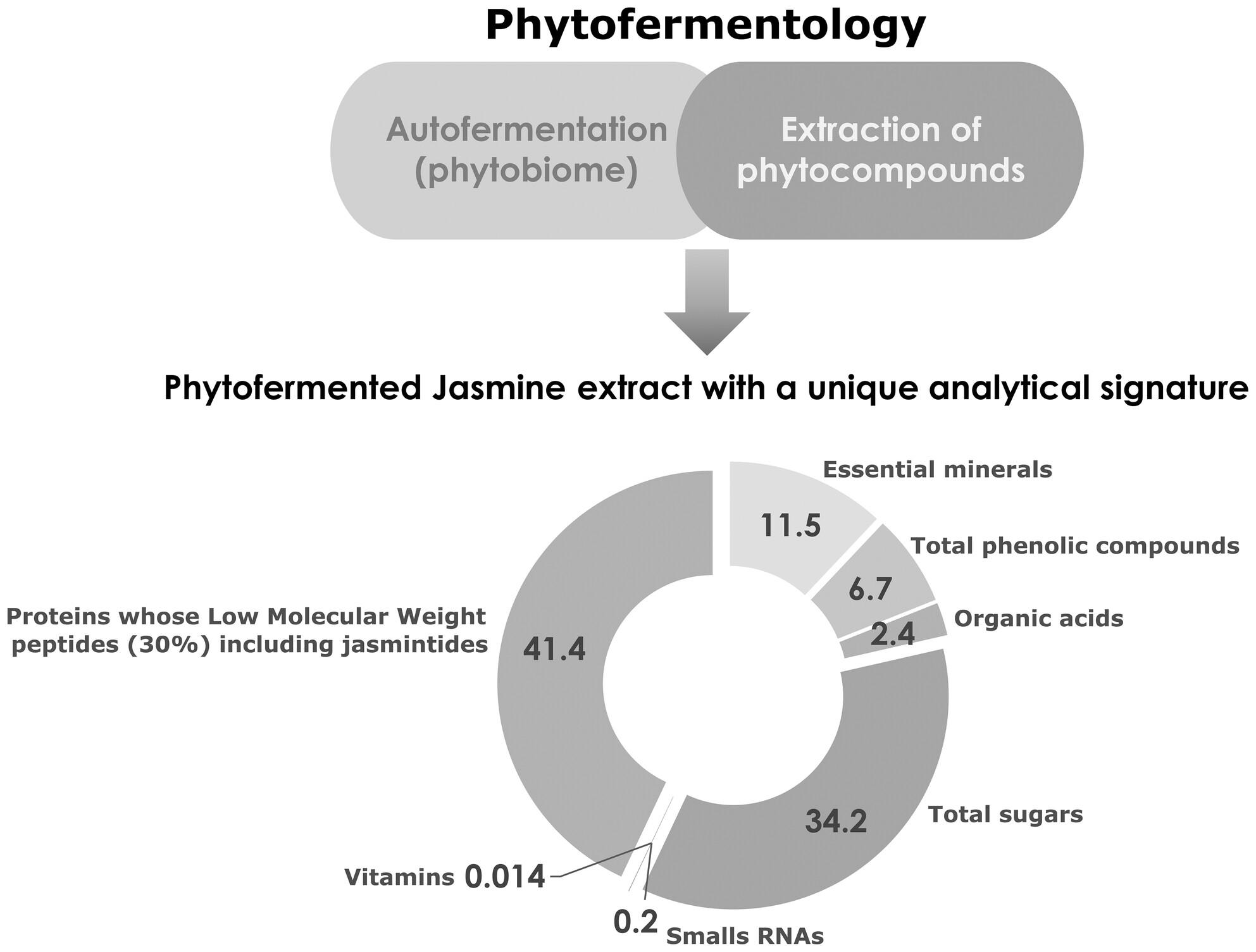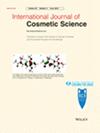Natural fermentation of fresh Jasmine flowers inspired the development of a biotechnological ingredient with global anti-ageing properties
Abstract
Objective
This study focused on the development of a new-to-world ingredient harnessing the natural potential of fresh Jasminum grandiflorum flowers to self-ferment by its phytobiome revealing flower content. Analytical investigations were conducted to highlight specific phytocompounds generated during the natural fermentation of flowers in comparison to a conventional extraction. The synergy with another extraction technology maximized the generation of biocompounds for an interesting efficacy.
Methods
Jasmine extract was elaborated by combining two patented technologies: the phytofermentology™, inspired by plant–microorganisms interaction and designed to develop ingredients obtained by natural fermentation of the vegetal using its own phytobiota; and the PSR™ technology allowing the extraction of bioactive phytocompounds such as small RNAs from plants.
Results
Analytical investigations of Jasmine extract highlighted uniqueness and richness of the phytocompound profiles, such as organics acids and phenolic compounds, markers of fermentation only obtained after phytofermentology in comparison to conventional extraction. Jasmine extract has the particularity to contain jasmintides, flower small peptides belonging to the family of cysteine-rich peptides (CRPs). Antioxidant and global anti-ageing properties were investigated in cell-free assays demonstrating interesting results: about 20% scavenging of free radicals from 0.5% of Jasmine extract and protection from DNA damage of 26% in comparison to a stressed control.
Conclusion
Phytofermentology™ technology combined with PSR™ technology, meant to be respectful of the environment, allowed to development of biofunctionals very close to nature with a unique analytical signature as Jasmine extract, using the potential of fresh flowers phytobiota to self-ferment. The efficacy of the ingredient on global antioxidation and anti-ageing via hyaluronidase/tyrosinase inhibitions was highlighted by cell-free evaluation assays. Further and complementary studies should be conducted to confirm the bioefficacy of this ingredient with in vitro / ex vivo assays.


 求助内容:
求助内容: 应助结果提醒方式:
应助结果提醒方式:


